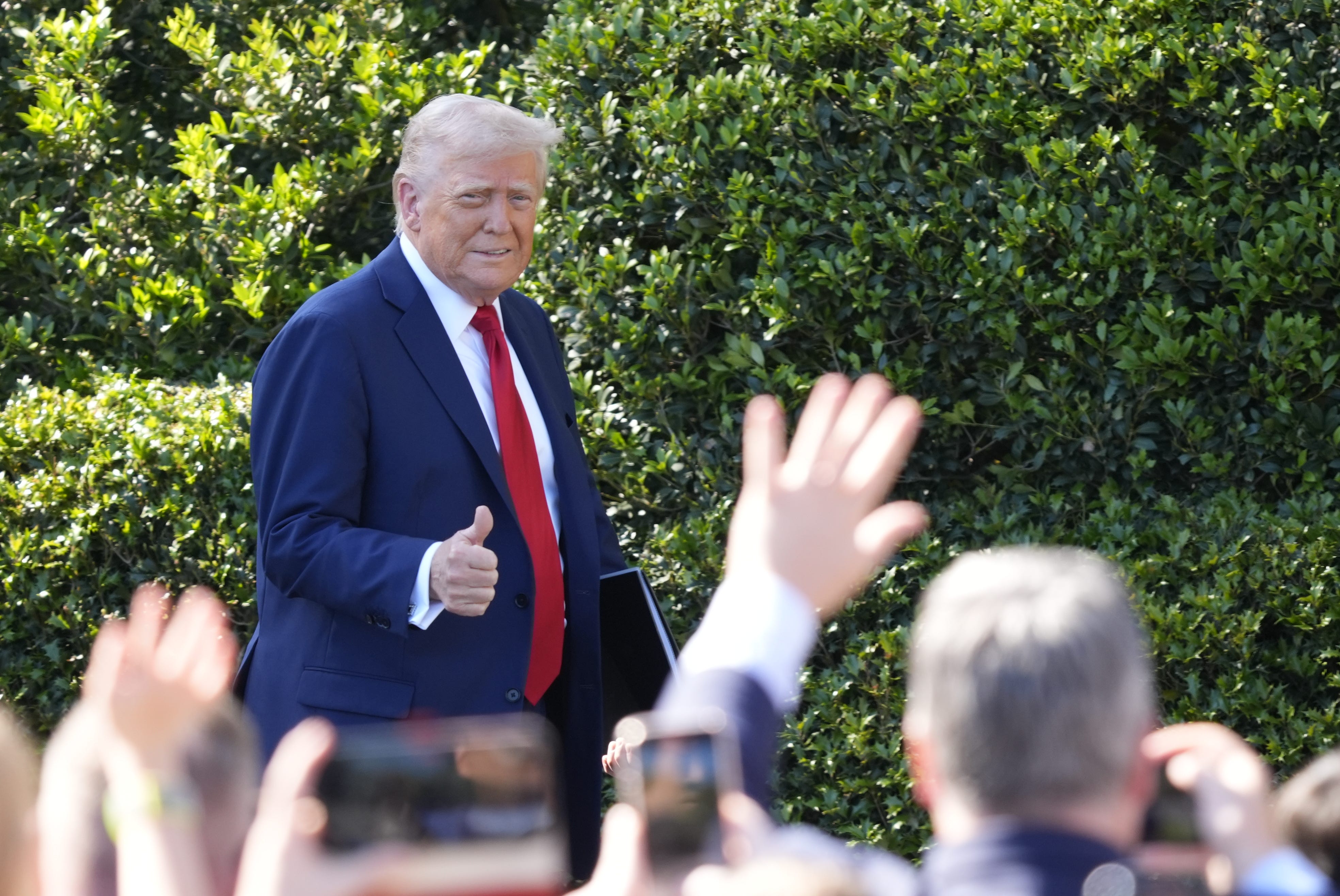What to Expect as Congress Tackles Donald Trump's "Big Beautiful Bill"
WASHINGTON – It wasn't easy for Republican lawmakers in Congress to reach this stage: Following weeks of negotiations, they finally outlined a plan. President Donald Trump 's legislative agenda, lawmakers are returning to Washington from a two-week break with plans to hammer out the details of what Trump calls one "big, beautiful bill."
Over the next several weeks, lawmakers will craft a sweeping package of Trump's priorities for taxes, border security and energy they will eventually pass along party lines. It is likely to be the marquee piece of legislation passed during Trump's second term.
The path forward will be rife intra-party challenges as Republicans work through competing priorities such as cutting spending and extending Trump's 2017 tax cuts.
Begin your day with more knowledge. Receive all essential news directly in your mailbox every morning.
This is the information you require.
Two options for the House and Senate
The budget blueprint passed earlier this month instructs the House and Senate to craft separate proposals that will eventually need to be reconciled. The Senate's instructions require lawmakers to find very few spending cuts while implementing the president's expensive tax proposals.
The two houses concur on the main points: Their aim is to solidify the tax cuts enacted during President Trump's initial tenure and scheduled to end this year; remove taxes on gratuities, overtime, and Social Security contributions; increase funding for defense and border security; and elevate the debt limit. avoid a looming default .
However, the specifics vary between each chamber. Besides differing expenditure amounts, the House has tasked legislators with identifying at least $1.5 trillion in reductions, whereas the Senate has set this as an objective without mandating more than just asking their committees to locate a modest $4 billion in cuts.
House Speaker Mike Johnson Has directed committees in the House to begin drafting the specifics of the legislation from April 28 to May 9, aiming for a completed package to be approved by Memorial Day. The Senate anticipates the procedure will require more time, with plans to pass the final bill by the Fourth of July.
Somewhere along the way, the two sides will have to reconcile their differences – a process that is sure to be politically challenging.
Fight over Medicaid
Multiple Republicans across various legislative bodies and every Democrat have expressed concerns that the concluding legislation might encompass substantial reductions to Medicaid, which is the healthcare program providing coverage for 72 million low-income individuals in America.
That's due to the House's guidelines incorporating an instruction to cut $880 billion from initiatives overseen by the House Energy and Commerce Committee, which nonpartisan experts has stated that it is impossible to reach an agreement without cutting Medicaid.
House Budget Committee Chair Representative Jodey Arrington, a Republican from Texas, stated earlier this month that there are numerous opportunities to cut costs without reducing benefits. He pointed out that the federal administration squanders approximately between $233 billion to $521 billion each year due to fraud across all programs, as reported by the Government Accountability Office; however, it remains uncertain how Congress plans to decrease this figure.
"It’s everywhere,” Arrington stated. “You end up checking the Medicaid rolls two times instead of just once, as you normally would.” President Biden , resulting in a savings of $160 billion."
Several Republicans like Sen. Josh Hawley , R-Mo., have stated they won’t support a bill that involves reductions to Medicaid. Additionally, Trump has mentioned this as well. He would reject a piece of legislation. If it reduces Medicaid benefits beyond what the GOP intends to eliminate as "waste, fraud, and abuse."

Spending concerns
A separate group within the Republican caucus is concerned that the plan could increase the deficit by trillions more dollars rather than reducing it.
These conservative members of the House focusing on finances almost blocked passage Concerns have emerged regarding the budget proposal because some feel it does not adequately reduce expenditures.
Their demonstration compelled House and Senate leadership to pledge at least $1.5 trillion in expenditure decreases — an objective that could prove challenging for the leaders to achieve without reducing benefits such as those provided through Medicaid. However, should strict conservative factions feel this commitment has been broken, they might refuse to support the concluding bill.
A policy test
Republicans intend to utilize a procedure referred to as " reconciliation in an effort to get the package approved without Democratic support in the Senate.
However, this procedure is exclusively for legislation associated with governmental expenditures. Senate parliamentarian , a non-partisan advisor in the upper chamber, will review the final bill to ensure each piece of policy is indeed related to spending. That incentivizes lawmakers to limit what they pack into the legislation.
Nevertheless, Republican senators have already chosen not to seek advice from the parliamentarian. a crucial accounting maneuver This enables the chamber to consider the prolongation of Trump's 2017 tax cuts part of "current policy." As such, extending these cuts seems cost-free instead of presenting a financial burden. $3.8 trillion over 10 years.
A negative decision from the parliamentarian once lawmakers have drafted the legislation might create challenges for Republicans further ahead.
The article initially appeared on USA TODAY: What you should understand as Congress begins work on Donald Trump's 'large impressive legislation'?
0 Response to "What to Expect as Congress Tackles Donald Trump's "Big Beautiful Bill""
Post a Comment